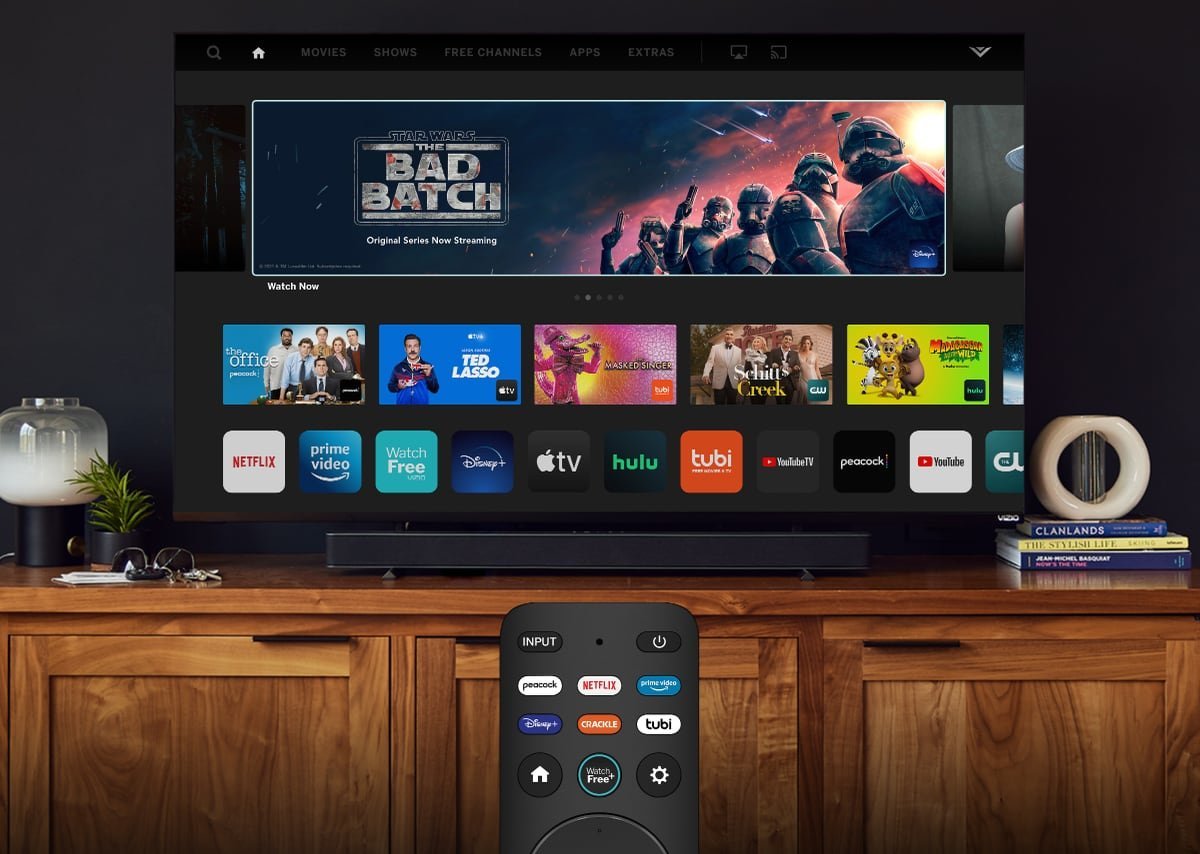Vizio is one of the best selling U.S. TV brands, notable for making some high quality but very affordable OLED televisions. So it may come as a surprise to discover that the bulk of the company’s profits doesn’t come from selling those models – in fact, it makes twice as much money from ads, data collection and subscriptions.

The company revealed in its latest earnings report last week that its Vizio Platform+ segment pulled in $57.3 million in sales, which is more than double th$25.6 million its Devices division made.
Vizio’s Devices unit sells 4K TVs, soundbars and so on, while Platform+ makes money from selling ad placements on its TV homescreens, ads that run on streaming channels, deals for dedicated buttons on its TV remotes, its cut from subscription fees and viewer data that’s sold to third-parties via its InScape program.
Platform+ revenue shot up 136% compared to a year earlier, helping Vizio to offset a slump in TV sales. The company reported that sales of televisions fell from 2.1 million in 2020 to just 1.4 million in its fiscal 2021 year, down 36%. Vizio Chief Executive William Wang told investors the drop was due to COVID-19-related supply chain problems, but he added the company has “pretty healthy inventory” as it heads into the busy holiday season.
Wang also said the company is working closely with third parties to ensure sufficient warehouse and trucking employees are available to get its products out to customers.
Within the Platform+ segment, Vizio revealed the number of SmartCast accounts has grown to 14 million. The company said it now makes an average of $19.89 per user per month, up from just $10.44 a year ago. Of that money, 77% comes from advertising, with Inscape data being the second-biggest contributor.
The Inscape program is a tad controversial, as it involves Vizio collecting viewer data by scanning everything people watch via Automated Content Recognition technology and then selling that to other advertisers.
For those who own a Vizio TV, it may comes as a shock to learn they’re being tracked. Luckily, Vizio does make it easy to opt out by switching off the ACR technology. Simply hit the MENU button on the TV remote then select System > Reset & Admin > Highlight Viewing Data > then hit the RIGHT arrow to turn the setting to Off.
Despite the controversy, Vizio’s business model shows that TV manufacturers do have a reliable way to make up losses related to the pandemic through good old fashioned advertising. Indeed, many other TV platforms and makers have followed suit. Roku has stated its plans to transform Roku OS into a next-generation ad platform and Google has introduced autoplaying “cinematic” ads on Android TV.
Meanwhile, Samsung Electronics has been putting more obstrusive ads on its Tizen homescreens, and LG Electronics recently launched a new TV OS that’s powered by advertising.